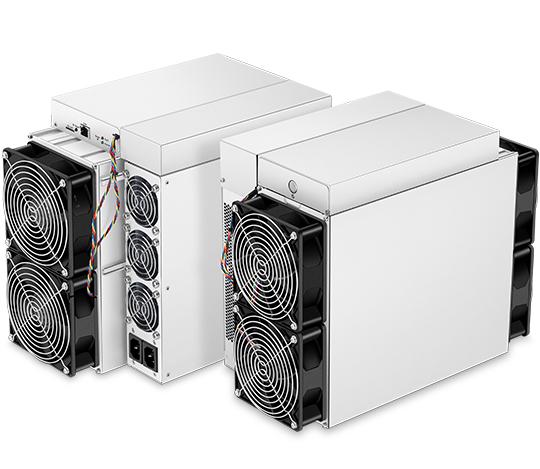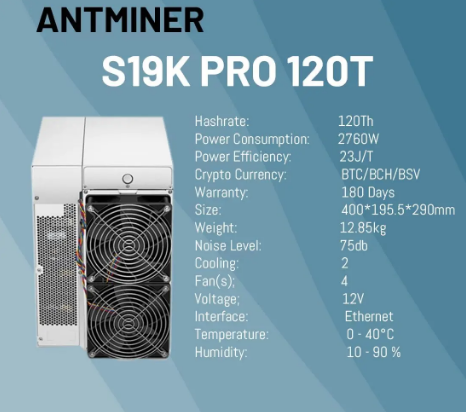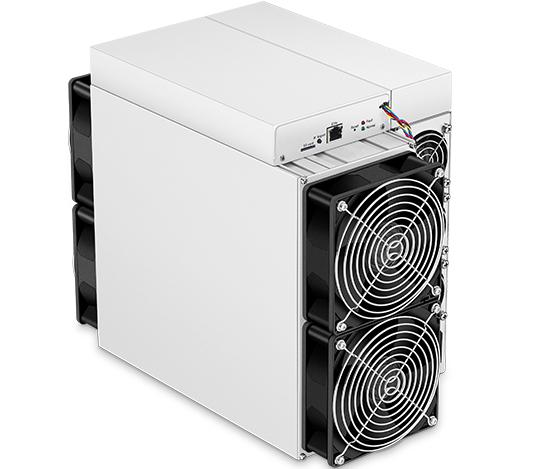How to Calculate Earnings with Bitcoin Miner S19k Pro: A Practical Guide for Mining Operators
Introduction
Cryptocurrency mining remains one of the most profitable ways to earn passive income in the blockchain space—provided you have the right hardware and know how to maximize its potential. The Bitcoin Miner S19k Pro, developed by industry leader Bitmain, is a high-performance SHA-256 miner designed for efficiency, reliability, and long-term profitability.
But simply owning an S19k Pro isn’t enough—miners must understand how to accurately calculate earnings to determine ROI, optimize operations, and stay competitive. This guide breaks down the key factors that influence profitability, including hash rate, power efficiency, electricity costs, mining difficulty, and Bitcoin’s market price.

By the end, you’ll have a clear framework for estimating daily, monthly, and annual earnings with the S19k Pro, along with practical tips to enhance mining efficiency.

Understanding the Bitcoin Miner S19k Pro’s Key Specifications
Before diving into earnings calculations, let’s review the S19k Pro’s core specs, as these directly impact profitability:
- Hash Rate: 120 TH/s (terahashes per second) – A high computational power that increases the chances of solving blocks and earning rewards.
- Power Efficiency: 23 J/TH (joules per terahash) – One of the most energy-efficient ratios in its class, reducing operational costs.
- Power Consumption: ~2760W (at 23 J/TH) – Lower than older models like the S19j Pro (104 TH/s at 29.5 J/TH).
- Voltage & Cooling: Operates at 200-240V with robust thermal management for 24/7 mining.
These specs position the S19k Pro as a top-tier miner for Bitcoin and other SHA-256 coins (e.g., Bitcoin Cash, Bitcoin SV).
Factors That Determine Mining Profitability
Calculating earnings isn’t just about plugging numbers into a calculator—it requires understanding the five critical variables:
1. Hash Rate (TH/s)
The S19k Pro’s 120 TH/s means it can perform 120 trillion hashing computations per second. Higher hash rates increase your share of the network’s total mining rewards.
2. Power Consumption & Electricity Costs
- The miner draws ~2760W (2.76 kW).
- Electricity cost varies by region (e.g., $0.05/kWh in hydro-rich areas vs. $0.15/kWh in high-cost regions).
- Example: At $0.10/kWh, running the S19k Pro for 24 hours costs:
2.76 kW × 24 hrs × $0.10 = $6.62/day.

3. Bitcoin’s Network Difficulty
- Difficulty adjusts every 2,016 blocks (~2 weeks) based on total network hash rate.
- Higher difficulty = fewer rewards per TH/s. Check real-time data on sites like BTC.com.
4. Bitcoin’s Price (USD/BTC)
- Mining rewards are paid in BTC but often converted to fiat.
- A higher BTC price increases USD-denominated profits.
5. Pool Fees & Maintenance Costs
- Most miners join pools (e.g., F2Pool, Antpool) and pay 1–3% fees.
- Factor in cooling, maintenance, and hardware degradation over time.
Step-by-Step Earnings Calculation
Let’s estimate daily earnings using the following assumptions:
- Hash Rate: 120 TH/s
- Power Cost: $0.10/kWh
- Pool Fee: 2%
- Current BTC Price: $60,000
- Network Difficulty: 80 trillion (example)
Step 1: Calculate Daily Revenue (BTC)
Use a mining calculator (e.g., WhatToMine) or the formula:
\[ \text{Daily BTC} = \frac{\text{Hash Rate} \times \text{Block Reward} \times 86400}{\text{Network Difficulty} \times 2^{32}} \]
For simplicity, let’s assume the miner earns 0.0005 BTC/day (varies with difficulty).
Step 2: Convert BTC to USD
\[ 0.0005 \, \text{BTC} \times \$60,000 = \$30 \, \text{per day} \]

Step 3: Subtract Operational Costs
- Electricity Cost: $6.62/day
- Pool Fee (2% of $30): $0.60
- Net Profit: \$30 – \$6.62 – \$0.60 = \$22.78/day
Step 4: Monthly & Annual Estimates
- Monthly: \$22.78 × 30 = \$683.40
- Annual: \$683.40 × 12 = \$8,200.80
*Note:* These figures fluctuate with BTC price, difficulty, and electricity rates.
Maximizing S19k Pro Profitability
1. Optimize Electricity Costs
- Use renewable energy (solar, hydro) or relocate to low-cost regions.
- Negotiate industrial rates with power providers.
2. Join a Reliable Mining Pool
- Pools like ViaBTC or Antpool offer stable payouts.
- Avoid pools with high fees or inconsistent rewards.
3. Monitor Hardware Efficiency
- Keep firmware updated for peak performance.
- Clean dust from fans and ensure proper ventilation.
4. Hedge Against Bitcoin Volatility
- Sell mined BTC during price peaks or use futures contracts to lock in profits.
5. Scale Operations Strategically
- Reinvest profits into additional S19k Pro units to compound earnings.
Long-Term ROI Considerations
- Break-Even Point: If the S19k Pro costs \$3,000, at \$22.78/day profit, ROI is achieved in ~132 days (4.4 months).
- Hardware Lifespan: ASIC miners typically last 3–5 years before efficiency declines.
- Future-Proofing: The S19k Pro’s efficiency ensures competitiveness even as difficulty rises.
Conclusion
The Bitcoin Miner S19k Pro is a powerhouse for SHA-256 mining, but profitability hinges on smart calculations and operational adjustments. By monitoring network conditions, optimizing electricity usage, and maintaining hardware, miners can maximize returns in a dynamic market.
For real-time tracking, use tools like:
Invest wisely, mine efficiently, and let the S19k Pro drive your crypto earnings to new heights.
Interested in purchasing the S19k Pro? Check trusted vendors like Minerfixes for competitive pricing and global shipping options.
*Disclaimer: Mining profitability is subject to market risks. Always conduct independent research before investing in hardware.*